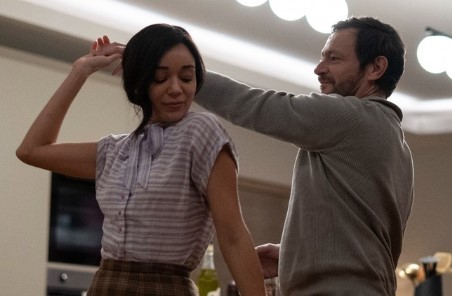The true story behind ‘Strays’ is set in the early 1950s in the East End of London. Nathaniel Martello-White’s mother told him about a stray dog she encountered at a bus stop one day when she was young. The mangy animal had been circling around her, as if it was looking for something or somebody.
She later found out that the dog belonged to a family who had moved away and left the pet behind. After befriending the dog and taking it home, she soon discovered that it wasn’t alone – there were five other strays following it.
In an effort to help them all find homes, she convinced some of her neighbors to take them in. However, when still more strays appeared on their doorstep, this kind gesture soon became an overwhelming task for one person to handle – so much so that eventually, local authorities had to be called in for assistance.
Despite this intervention, some of these dogs never found owners and remained on the streets until their final days. This bittersweet tragedy inspired Nathaniel Martello-White’s ‘Strays’, a film which pays homage to his mother’s courage and compassion towards these abandoned animals.
A film about a woman who just disappears, leaving her husband and children behind to build a new and affluent life elsewhere, might seem far fetched. The Strays opening moments does just that, as it depicts Cheryl (Ashley Madekwe) distraught over the hardships she faces in her impoverished life. Desperate for more, she leaves a note for her husband and disappears. Viewers catch up with Cheryl, now Neve, years later.
She has everything she once hoped for – a home in an upper middle class Wiltshire suburb, two new children with equally middle class names, and a job as a deputy head at a private school. Neve’s perfect life escalates when her original children track her down, and want answers. Although the premise is shocking, there is real inspiration behind it – read on to find out the events behind the story.
Martello-White said the story his mother told was “about a woman who essentially was denying the fact that she had two Black children. She also had two children who were very fair-skinned and almost white-passing, and this woman was biracial. And I was just really struck by the kind of complexities of that, like, what would make somebody feel like they had to erase their past and deny it?”
The story Martello-White’s mother told was heartbreaking. It is one of many stories that speak to the pain and reality faced by interracial families. The woman in the story was likely a biracial woman denying her black children, most likely out of fear for their safety and well-being due to the racism she experienced in her own life. This denial was an example of internalized racism, where people of color can still perpetuate racism against themselves or other people of color due to the oppressive systems they live within.
This story speaks to a deep wound of history brought about by colonization and slavery, yet it is still relevant today as there are still mixed race families who have experienced this kind of rejection from family members or society at large. It also shows how deeply white supremacy has been embedded in our culture and how difficult it is to unlearn these damaging beliefs even within one’s own family dynamics. As Martello-White said: “It brings up a lot of questions about identity, politics — why do we deny ourselves?
He continued to add “I had a really interesting conversation with my mum about generational trauma – she’s also biracial – and she was sort of talking to me about her experiences as a biracial woman and kind of traversing different cultures and classes and sometimes being perceived as almost white and kind of how people would treat her.
And then the odd sort of slip, and then there’s a microaggression or something, which actually is quite offensive, or quite shocking.”
The publication continued to report that Martello-White’s mother imparted this story in the same year Get Out was released and during the BFI Network program in conjunction with the London Film Festival and Black Star, he was persistently asked what his first feature film would be.
The story that Martello-White’s mother imparted was about the Black British experience in a film entitled Strays. The film follows a family of three outcasts who have been ostracized from their community due to their mixed-race background. The film serves as a commentary on the struggles of being both Black and British in an era where racism is still very much alive. It was released during the same year Get Out, another movie based on racial inequality, came out and at a time when conversations about diversity were more prominent than ever before.
Strays has earned praise for its honest look at identity and race relations within Britain during this period in history. Its themes are not only relevant to today but also offer insight into how racism can be tackled through art and storytelling. Additionally, it serves as an important reminder of the power films can have to evoke emotion, challenge beliefs, and affect social change – all while providing entertainment value too. Strays offers an opportunity to reflect on our own lives and experiences, connecting us with characters we may relate to or learn from.
Pondering this question at the time, the writer said “And I sort of came away from that experience being like, it had to be something really personal that sort of explored race in a really complex way but also have a genre element to it that kind of made it more universal and far-reaching,” and he began formulating the script for The Strays.
